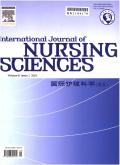The relationship between proxy decision-making content and cues by families of patients with malignant brain tumor: A descriptive qualitative study
IF 3.1
3区 医学
Q1 NURSING
引用次数: 0
Abstract
Objectives
This study aimed to clarify the relationship between the content of proxy decision-making made by families of patients with malignant brain tumors regarding treatment policies and daily care and the cues leading to those decisions.
Methods
Semi-structured personal interviews were used to collect data. Seven family members of patients with malignant brain tumors were selected to participate in the study by purposive sampling method from June to August 2022 in the Patient Family Association of Japan. Responses were content analyzed to explore the relationship between the content of decisions regarding “treatment policies” and “daily care” and the cues influencing those decisions. Semi-structured interviews were analyzed by using thematic analysis.
Results
The contents of proxy decisions regarding “treatment policies” included implementation, interruption, and termination of initial treatments, free medical treatments, use of respirators, and end-of-life sedation and included six cues: treatment policies suggested by the primary physician, information and knowledge about the disease and treatment obtained by the family from limited resources, perceived life threat from symptom worsening, words and reactions from the patient regarding treatment, patient’s personality and way of life inferred from their treatment preferences, family’s thoughts and values hoping for better treatment for the patient. Decisions for “daily care” included meal content and methods, excretion, mobility, maintaining cleanliness, rehabilitation, continuation or resignation from work, treatment settings (outpatient or inpatient), and ways to spend time outside and included seven cues: words and thoughts from the patient about their way of life, patient’s reactions and life history inferred from their preferred way of living, things the patient can do to maintain daily life and roles, awareness of the increasing inability to do things in daily life, family’s underlying thoughts and values about how to spend the remaining time, approval from family members regarding the care setting, advice from medical professionals on living at home.
Conclusions
For “treatment policies,” guidelines from medical professionals were a key cue, while for “daily care,” the small signs from the patients in their daily lives served as cues for proxy decision-making. This may be due to the lack of information available to families and the limited time available for discussion with the patient. Families of patients with malignant brain tumors repeatedly use multiple cues to make proxy decision-making under high uncertainty. Therefore, nurses supporting proxy decision-making should assess the family’s situation and provide cues that facilitate informed and confident decisions.
恶性脑肿瘤患者家属代理决策内容与提示的关系:一项描述性质的研究
目的探讨恶性脑肿瘤患者家属在治疗政策、日常护理等方面的代理决策内容与决策线索之间的关系。方法采用半结构化个人访谈法收集资料。采用有目的抽样的方法,于2022年6月至8月在日本患者家庭协会中选取7名恶性脑肿瘤患者的家庭成员参与研究。对回应进行内容分析,以探索关于“治疗政策”和“日常护理”的决定内容与影响这些决定的线索之间的关系。采用主题分析法对半结构化访谈进行分析。结果“治疗政策”代理决策的内容包括初始治疗的实施、中断和终止、免费医疗、使用呼吸机和临终镇静,并包括6个线索:主治医生建议的治疗政策、家庭从有限资源中获得的疾病和治疗信息和知识、症状恶化所感知到的生命威胁、患者对治疗的言语和反应、患者从治疗偏好中推断出的个性和生活方式、家属希望患者得到更好治疗的想法和价值观。“日常护理”的决定包括膳食内容和方法、排泄、活动、保持清洁、康复、继续或放弃工作、治疗环境(门诊或住院)以及户外活动的方式,并包括七个线索:病人对自己生活方式的话语和想法,病人的反应和从他们喜欢的生活方式推断的生活史,病人可以做的事情来维持日常生活和角色,意识到越来越无法在日常生活中做事情,家人对如何度过剩余时间的潜在想法和价值观,家庭成员对护理环境的认可,医疗专业人员对在家生活的建议。结论对于“治疗政策”,医疗专业人员的指导方针是关键线索,而对于“日常护理”,患者日常生活中的小迹象是代理决策的线索。这可能是由于家庭缺乏可用的信息以及与患者讨论的时间有限。恶性脑肿瘤患者家属在高不确定性下反复使用多种线索进行代理决策。因此,支持代理决策的护士应评估家庭的情况,并提供线索,以促进知情和自信的决定。
本文章由计算机程序翻译,如有差异,请以英文原文为准。
求助全文
约1分钟内获得全文
求助全文
来源期刊

International Journal of Nursing Sciences
Nursing-Nursing (all)
CiteScore
6.10
自引率
2.60%
发文量
408
审稿时长
25 days
期刊介绍:
This journal aims to promote excellence in nursing and health care through the dissemination of the latest, evidence-based, peer-reviewed clinical information and original research, providing an international platform for exchanging knowledge, research findings and nursing practice experience. This journal covers a wide range of nursing topics such as advanced nursing practice, bio-psychosocial issues related to health, cultural perspectives, lifestyle change as a component of health promotion, chronic disease, including end-of-life care, family care giving. IJNSS publishes four issues per year in Jan/Apr/Jul/Oct. IJNSS intended readership includes practicing nurses in all spheres and at all levels who are committed to advancing practice and professional development on the basis of new knowledge and evidence; managers and senior members of the nursing; nurse educators and nursing students etc. IJNSS seeks to enrich insight into clinical need and the implications for nursing intervention and models of service delivery. Contributions are welcomed from other health professions on issues that have a direct impact on nursing practice.
 求助内容:
求助内容: 应助结果提醒方式:
应助结果提醒方式:


